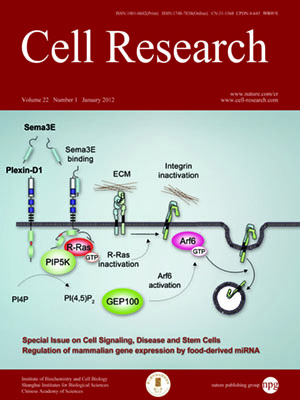
Advanced Search
Submit Manuscript
Advanced Search
Submit Manuscript
Volume 22, No 1, Jan 2012
ISSN: 1001-0602
EISSN: 1748-7838 2018
impact factor 17.848*
(Clarivate Analytics, 2019)
Volume 22 Issue 1, January 2012: 248-258
Tie Chen1,*, Kun Yang2,*, Jianhua Yu1, Wentong Meng1, Dandan Yuan3, Feng Bi3, Fang Liu1, Jie Liu2, Bing Dai2, Xinzu Chen2, Fang Wang2
1Laboratory of Stem Cell Biology, State Key Laboratory of Biotherapy, West China Hospital, West China Medical School, Sichuan University, Chengdu 610041, China
2Department of Gastrointestinal Surgery, State Key Laboratory of Biotherapy, West China Hospital, West China Medical School, Sichuan University, Chengdu 610041, China
3Oncology, State Key Laboratory of Biotherapy, West China Hospital, West China Medical School, Sichuan University, Chengdu 610041, China
Correspondence: Jiankun Hu, Xianming Mo,(hujkwch@126.com; xmingmo@yahoo.com)
Gastric cancer is the fourth most common cancer worldwide, with a high rate of death and low 5-year survival rate. To date, there is a lack of efficient therapeutic protocols for gastric cancer. Recent studies suggest that cancer stem cells (CSCs) are responsible for tumor initiation, invasion, metastasis, and resistance to anticancer therapies. Thus, therapies that target gastric CSCs are attractive. However, CSCs in human gastric adenocarcinoma (GAC) have not been described. Here, we identify CSCs in tumor tissues and peripheral blood from GAC patients. CSCs of human GAC (GCSCs) that are isolated from tumor tissues and peripheral blood of patients carried CD44 and CD54 surface markers, generated tumors that highly resemble the original human tumors when injected into immunodeficient mice, differentiated into gastric epithelial cells in vitro, and self-renewed in vivo and in vitro. Our findings suggest that effective therapeutic protocols must target GCSCs. The capture of GCSCs from the circulation of GAC patients also shows great potential for identification of a critical cell population potentially responsible for tumor metastasis, and provides an effective protocol for early diagnosis and longitudinal monitoring of gastric cancer.
Cell Research (2012) 22:248-258. doi:10.1038/cr.2011.109; published online 5 July 2011